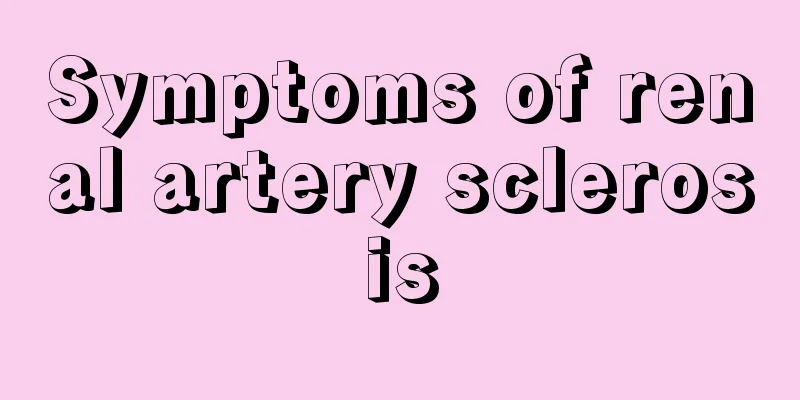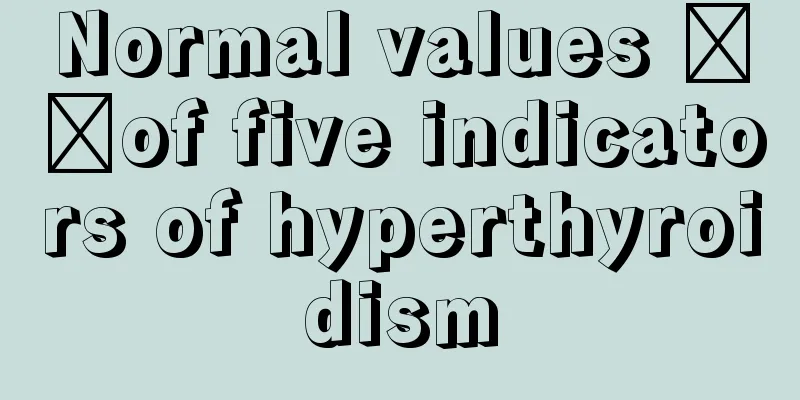Symptoms of renal artery sclerosis

|
The kidney is a relatively complex organ, but it is very important to the human body because it is responsible for the body's metabolism, constantly filtering harmful substances from the body and excreting them to ensure the cleanliness of the body. The health of the kidneys is very vulnerable to damage, and disease problems can cause great pain to patients. For example, renal artery sclerosis is one of the common diseases. Let’s take a look at the symptoms of renal artery sclerosis. Symptoms of renal arteriosclerosis 1. Often have moderate or above hypertension and its clinical symptoms. 2. It may be accompanied by arteriosclerosis of the heart, brain, and fundus of the eye and its manifestations. 3. There is mild proteinuria, the degree of which is positively correlated with hypertension. 4. In the later stage, there may be nocturia, decreased urine specific gravity and urine osmotic volume, leading to symptoms of renal insufficiency. Medication principles for renal artery sclerosis 1. Early hypertension is mainly treated with oral diuretics and common antihypertensive drugs. Choose one or two at a time, and replace them in sequence if they are ineffective: diuretics, beta-blockers, calcium channel blockers and converting enzyme inhibitors. 2. For middle and late stage hypertension, "double" or "triple" antihypertensive drugs are used together, supplemented by lipid-lowering drugs. Vasodilators can be used intravenously if necessary. 3. If combined with renal insufficiency, in addition to appropriate blood pressure reduction, renal insufficiency treatment should also be considered. 4. Provide symptomatic supportive treatment and pay attention to vitamin and electrolyte supplementation. 5. Late-stage renal insufficiency and uremia, treated with dialysis Differential diagnosis of renal arteriosclerosis 1. Renal vascular hypertension: manifested as high blood pressure. But it is more common in young people, with normal blood pressure in the past; vascular murmurs can be heard in the upper abdomen; intravenous urography shows a difference of more than 1.5 cm in the long axis length of the two kidneys; renal artery angiography shows stenosis of the main trunk of the renal artery and dilatation after stenosis; 2. Chronic pyelonephritis: manifested by chronic progressive hypertension and shrinkage of both kidneys. However, there was a history of urinary tract infection, and urinary system symptoms and urine changes appeared before the occurrence of hypertension; there were a large number of pus cells in the urine, and pathogenic bacteria were found in ordinary bacterial culture. There is often moderate or above hypertension and its clinical symptoms. It may be accompanied by arteriosclerosis of the heart, brain, and fundus of the eyes and its manifestations. There is mild proteinuria, the degree of which is positively correlated with hypertension. In the later stage, there may be nocturia, decreased urine specific gravity and urine osmolarity, leading to symptoms of renal insufficiency. |
<<: What are the symptoms of food indigestion
>>: Symptoms of bone marrow disease
Recommend
How to deep cleanse your face
In fact, many people now pay great attention to t...
What are the symptoms of advanced lung cancer? If there are 3 symptoms of lung cancer, it means it is in the advanced stage
Many diseases often have no obvious symptoms in t...
What are the markers for prostate cancer?
1. Total prostate-specific antigen (TPSA) Mainly ...
Laser correction of myopia
Nowadays, more and more people are suffering from...
What are the causes of prostate tumors?
Prostate tumors are more common in young and midd...
What are the dangers of not cleaning the water heater?
Water heaters are very common things in our lives...
How to effectively treat esophageal cancer?
Esophageal cancer brings a lot of trouble to the ...
Early symptoms of pancreatic cancer
Early symptoms of pancreatic cancer: Pancreatic c...
How to treat liver cancer after surgery to prevent recurrence?
At present, there are many and complex treatments...
How can we strengthen the prevention of cervical cancer? Will cervical cancer become the first cancer to be eliminated?
"Cervical cancer remains one of the most com...
A brief introduction to testicular cancer
Due to the fast-paced life and busy work, many pe...
Steps to get braces
As people get older, parts of their bodies are ag...
The role and efficacy of alkali powder
Alkali powder is a powdery substance. Generally s...
What happens if the penicillin skin test is positive?
Penicillin is the most traditional and commonly u...
Does black bean tea have the effect of increasing milk secretion?
Some pregnant mothers do not have enough milk aft...









